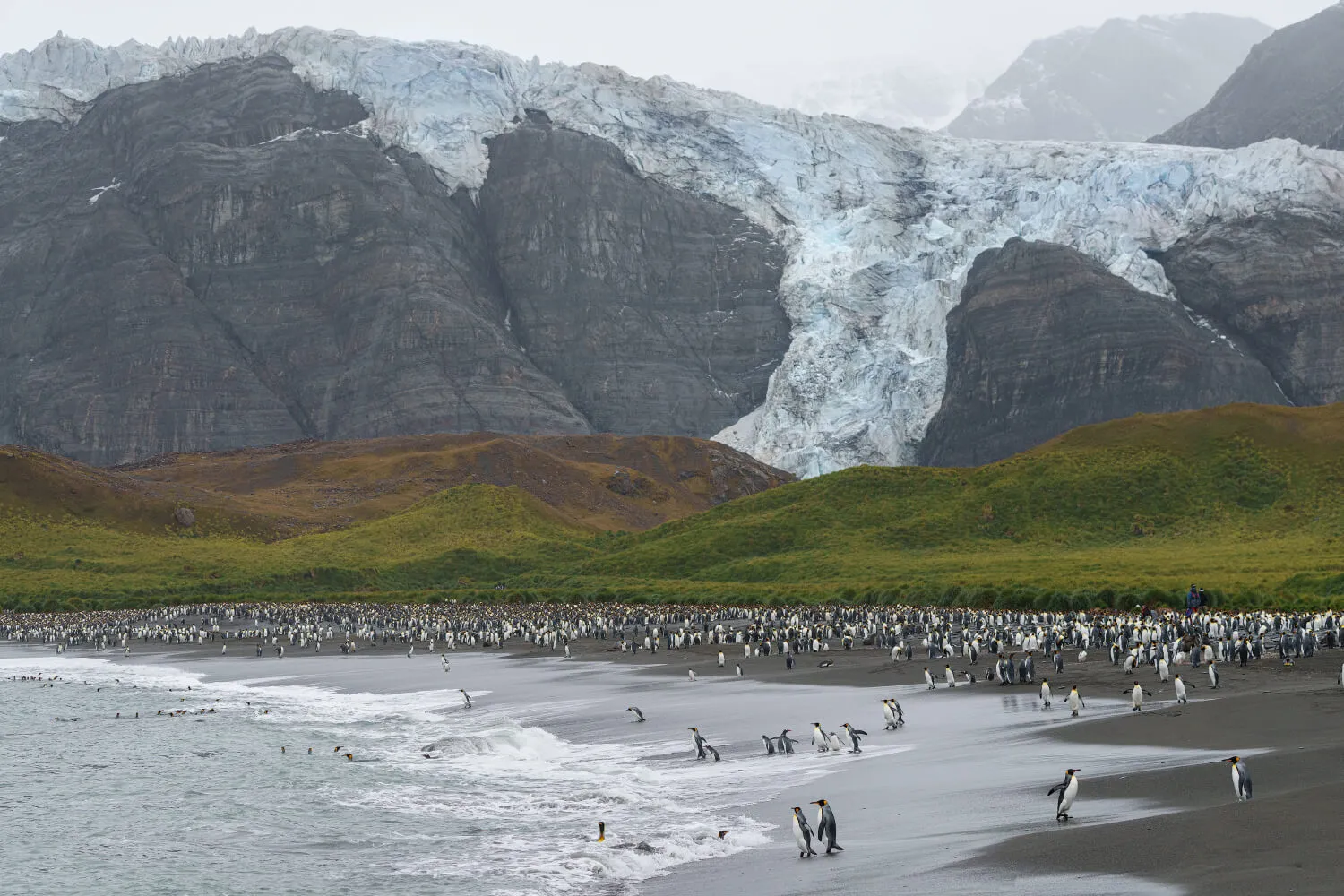

Nestled amidst the historic and awe-inspiring landscapes of Antarctica, Kirsty Dick, a scholar, adventurer, and passionate advocate for the southernmost continent, reveals three remarkable facets that make this frozen world truly special. Hailing from Edinburgh, Scotland, Kirsty's academic journey has led her from a degree in History to an MSc in Marine Systems and Policy, a trajectory rooted in her fascination with history and a thirst for adventure. Her Antarctic odyssey began when she joined the UK Antarctic Heritage Trust for a life-changing four-month stint at Port Lockroy during the Austral summer of 2018-19, sharing the island with only three other souls. Now, she is at the forefront of research with the University of Edinburgh, focusing on harnessing tourism and fishing vessels for optimal ocean observations and data collection in the Southern Ocean. As a seasoned member of the Antarctica21 family, Kirsty's boundless enthusiasm for the polar regions extends to guiding in the Arctic during the northern summer.Join us as Kirsty takes us on a journey to uncover the three elements that define the unparalleled charm of Antarctica.

The light is awe-inspiring
In Antarctica, there isn’t the array of colors from trees and vegetation that we’re often so well used to at home. I find that you become much more acutely aware of light and shadow in the Antarctic. This isn’t to say there isn’t color in the Antarctic - there are the blues of sea and sky, bright splashes from lichens and mosses, reddish rocks - but the expanses of white from the snow and ice with seams and peaks of black stone, catch the light and shadow in a way that is unique and mesmerizing.

I remember watching the sun rise over a mirror-calm sea as we approached Devil Island in the Erebus and Terror Gulf one morning. The sky slowly shifted from pastel towards the richest shades of orange and pink. The icebergs surrounding the ship glowed pink along the horizon while sea ice formed a loose patchwork over the water. With no breath of wind in the air, it was completely quiet and still, and my colleagues and I stood up on the ship's top deck and watched the day bloom around us for an hour or more. To top off one of the most magical moments I’ve ever experienced, ahead of us among the ice, a pod of orca joined us as the sun tipped over the horizon.

A diverse and interconnected natural world
The Antarctic Peninsula's ecology and ecosystems are diverse and interconnected, and we have the chance to experience so much of it. Up on the Bridge and outer decks of the ship, we have the opportunity to see the giants of our oceans, like humpback whales and orca, or the smaller but ever-characterful fur seals and leopard seals. Soaring around the ship from the sea up into the mountains, we can see giant petrels, skuas, gulls, and many other beautiful birds, like the Wilson’s storm petrel that dances on the water's surface like a butterfly. And, of course, closer to shore, we can see the highways marking the snow where penguins make their way between the sea and their colonies, raising their chicks throughout the summer. All these species are connected, along with those species it’s harder to spot, including the krill, fish, sea stars, and phytoplankton that make the Southern Ocean one of the most abundant food sources on our entire planet. It’s a world of wonder that never fails to amaze me.

I remember the first time I saw one of my colleagues place a drop of seawater from a sample we had collected that very morning on a glass plate and under the microscope. It took a moment to focus the lenses. Still, suddenly, we could see a circus of the most extraordinary shapes bursting onto the screen - phytoplankton of every shape and size imaginable! They made a magnified, dancing collage, and we could identify different types of phytoplankton, giving a whole new perception to the invisible forests that live in their own world under the water that we could now see live and alive.
No two days are the same in the Antarctic, and I love that
Growing up in the UK, I have known the concept of four seasons in a day for a long time, but the weather in the Antarctic can be fierce, majestic, harsh, beautiful, and so much more within a few hours. It’s amazing to feel the raw power of the wind as it swirls snow up and around the ship or to see blue skies and calm seas with the sun making the snow shine brilliant white and the sea the deepest blue. I love the unpredictability of it and what it can add to an already awe-inspiring and dramatic landscape.I spent a summer season living on a small historic base on the West Antarctic Peninsula, where the weather was an integral part of our daily lives. Every aspect of life on base was manual (no running water or plumbing, etc.), making adverse weather feel even more acute when we would have to head outside through thigh-high snow and howling winds to perform basic daily duties. Mid-season, we had more rainfall than usual, and behind the island in the back bay was Thunder Glacier. One afternoon, we were in the hut, and the mightiest boom and crack echoed, making the entire building quake. But within a few hours, the skies had cleared to blue, the wind had dropped, and we sat at the water's edge and watched the penguins and seals for hours in the glowing midnight sun. Once you embrace it as a part of life in the south, the unpredictability of Antarctica’s weather can be utterly magical.

Start planning your next big adventure today! Review our limited-time promotions.
Related Articles
Experience the Extraordinary
From dramatic landscapes to close wildlife encounters, every journey to the White Continent is unique. Let's start planning yours together.











.avif)
_INT0328.avif)
.jpg)



